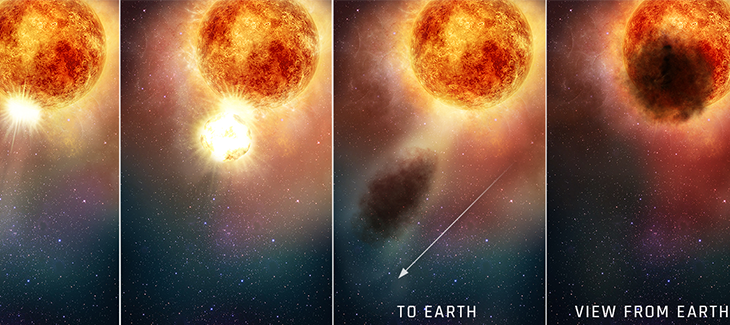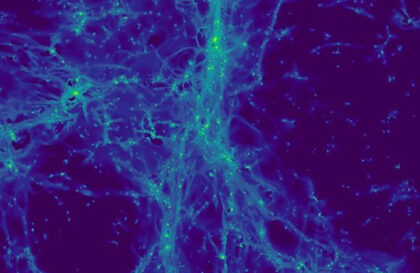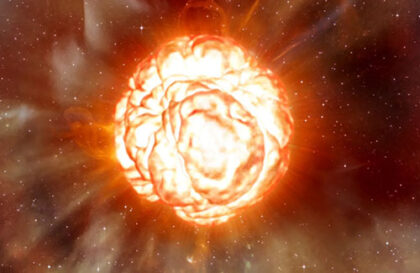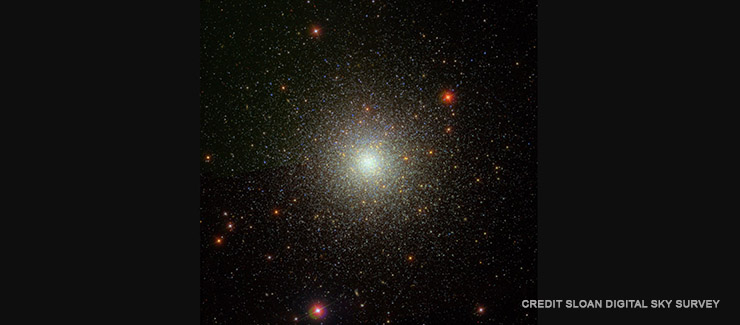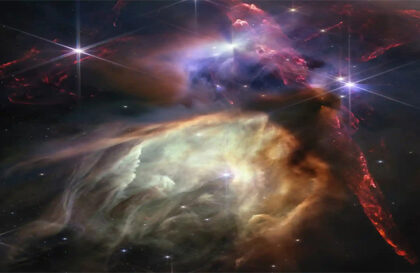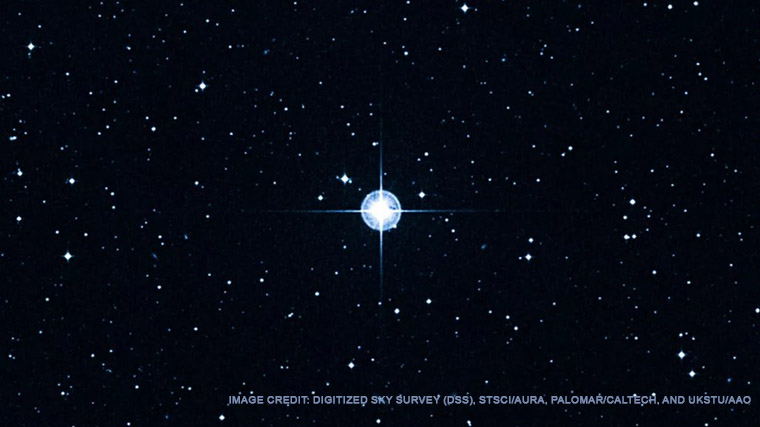In 2023, Betelgeuse increased its brightness by 50% in weeks, sparking rumors of an impending explosion. But experts believe it will be thousands if not millions, of years away from transforming into a supernova.
“The star will go supernova…” says Andrea Dupree from the Center for Astrophysics | Harvard and the Smithsonian Institution in Cambridge, Massachusetts.
However, some signs still make scientists wonder what is happening to the star.
Betelgeuse captured by the STELLINA smart telescope in February 2020. Credit: the Vaonis team.
- Betelgeuse is 15-20 times more massive than our Sun and is now in the Red Giant stage – and this is the “death phase.”
- It rotates faster than other stars of its type. There is an assumption that Betelgeuse swallowed a companion planet.
- The star was described in ancient documents as a “yellowish Saturn.” Still, we now see it as reddish, so could it be that it has changed color, and if so, does this mean that evolution is happening faster than predicted and the supernova could happen faster, too?
About Betelgeuse
The star Betelgeuse is a brilliant ruby-red spot in the constellation Orion. This supergiant has a diameter of about 1 billion miles (1.6 billion kilometers) and pulsates every 420 days. If it were at the center of our solar system, it would reach the orbit of Jupiter.
Credit: NCAO/EDU
The ultimate fate of a star is to explode as a supernova. When this happens, it will be visible from Earth’s daytime sky.
But there are now a lot of fireworks going on before the final explosion.
Fireworks 2019
Betelgeuse darkened dramatically in September 2019, losing over two-thirds of its brightness by February 2020. Astronomers speculate that this was caused by the ejection of superhot material, forming a cloud of light-blocking dust. Hubble observed the movement of this material in September, October, and November 2019. In December, several ground-based telescopes observed the star’s dimming in the southern hemisphere.
Hubble’s ultraviolet observations showed that Betelgeuse’s dimming was caused by the ejection of hot material into space, forming a dust cloud, blocking light from a quarter of its surface.
Betelgeuse may have “exploded” its top, stripping off much of its visible surface and undergoing a giant coronal mass ejection (SME), an unusual occurrence for a star.
Emission plume
Betelgeuse’s convective plume, more than 1 million miles (1.6 million kilometers) across, originated from inside the star and triggered the eruption, tearing off a chunk of its photosphere that weighed more than the Moon.
Credit: NASA, ESA, and E. Wheatley (STScI)
This piece, having cooled, formed a dust cloud, blocking the star’s light for earthly telescopes. Astronomers have never seen such a phenomenon when a star loses so much of its surface.
Surface mass ejections and coronal mass ejections may be two completely different things.
Our Sun regularly sheds parts of its thin outer atmosphere, the corona, in an event known as a coronal mass ejection (CME). But the Betelgeuse CME ejected 400 billion times more mass than a typical CME!
Researchers are hoping for additional data from the James Webb Telescope via infrared light. These observations will help us understand how red stars lose mass before going supernova. The loss of mass greatly affects their future.
Astronomers put together puzzles
The star Betelgeuse is recovering from a significant internal shock. Its previously constant 420-day pulsation, noted by astronomers for 200 years, has disappeared. This change may be a consequence of an explosion inside the star.
Andrea Dupree compares the star’s internal processes to an unbalanced washing machine. The interior of the star continues to “bounce.” The outer layers have returned to normal, but the star’s surface is still as unstable as a plate of gelatin dessert. The spectra of the TRES and Hubble telescopes provide such data.
Dupree analyzes Betelgeuse’s behavior using different astronomical instruments. It combines data from STELLA, TRES, STEREO-A, Hubble, and AAVSO to create a complete picture of events around the star. Of particular importance was data from Hubble, which Dupree used in 1996 to obtain the first images of hot spots on the surface of Betelgeuse. This was the first direct image of a star at such a deep level since the Sun.
View of the surface of Betelgeuse as captured by the Hubble Space Telescope (1995). Credit : A. Dupree (CfA), R. Gilliland (STScI), FOC, HST, NASA
Astronomers have pieced together a scenario of upheaval.
Betelgeuse continues its slow recovery from the shock. The events in 2019 and 2023 are not necessarily harbingers of the coming explosion. The current phenomena of mass loss and brightness changes do not indicate an imminent explosion in the near future.
However, Betelgeuse’s surprisingly irritable behavior is no guarantee that it can’t happen tomorrow.
Fate of Betelgeuse
The ultimate fate of a star is to explode as a supernova. When it eventually does, it will be briefly visible from Earth’s daytime sky.
Betelgeuse is located in Orion, one of the most recognizable constellations in the sky. The mammoth star marks the hunter’s right shoulder. Take advantage of an event that happens once every thousand years.
If it does explode
Credit: OBOZREVATEL/NASA
Betelgeuse’s supernova explosion poses no threat to Earth despite its potentially impressive brightness. Located 500 light-years away, the star could become so bright after the explosion that it would be visible during the day, surpassing the glow of the full Moon. A “rain” of neutrinos will come to Earth, but these particles are safe. The star’s brightness will fade over several months, remaining visible to the naked eye for several years before finally fading away.
So people are not in danger?
Supernovae create high-energy particles that penetrate Earth’s magnetic field, but Betelgeuse is too far away for them to be dangerous. Radioactive iron produced by the explosion was found on Earth on the seabed and on the Moon but did not cause harm. This iron was thrown to us after a supernova explosion that existed 300 light years away.
Only a supernova several dozen light years away could threaten life on Earth. Its explosion would destroy the Earth’s ozone layer. Ultraviolet levels would rise to levels that would lead to the extinction of all living things.
Fortunately, such events are sporadic.
Banner image: NASA, ESA, and E. Wheatley (STScI)
Image credit:
https://hubblesite.org
https://vaonis.com
https://exoplanetscience.org
https://www.salon.com
https://vaonis.com
https://eng.obozrevatel.com
